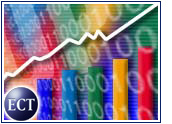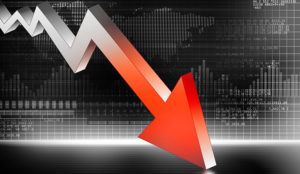
It is difficult to know whether industry analysts are feeding the media’s tendency to dwell on fear, uncertainty and doubt — or vice versa — but in the past several months, Internet air space has been crackling with dire predictions regarding e-commerce.
In light of the torrent of anecdotal evidence suggesting that e-commerce firms may be on the endangered species list, the E-Commerce Times investigated the big picture of the industry. What we found may surprise you.
True, there is a whole lot of shaking-out going on. For the e-tailers who are going, going or gone — and the investors who put their faith in them — the e-commerce landscape is bleak and barren. But a look at the big picture reveals that the losers inhabit just a small portion of the terrain, and that most inhabitants of the e-commerce world are not only still breathing, but doing brisk business at a PC near you.
Dot-Coms Fail, But Shoppers Keep Coming
As the shakeout runs its inevitable course, some e-tailers are forced to close their virtual doors to their customers, but those shoppers are not leaving the Internet — they are simply taking their business to other Web sites. And more Net newbies join the shoppers’ ranks every day.
Recently, Cambridge, Massachusetts-based Forrester Research found that consumers are increasingly giving e-commerce a chance. Eleven million more consumers will make purchases online this year, driving Internet retail spending to over $38 billion (US$) in the United States, the report said. Forrester’s research also indicates that Americans are moving from surfing the Web to shopping online at a faster pace than ever before.
Projections from the Boston Consulting Group are even higher. The firm predicts that U.S. shoppers will likely spend over $61 billion online this year, according to a recent report, “The State of Online Retailing 3.0.” The data also indicates that the business-to-consumer (B2C) e-commerce market will grow 85 percent in 2000.
Changing Demographics, Changing Habits
The impressive increase in online sales is partially due to the changing profile of the Internet shopper. “When we started surveying online consumers three years ago, Web buyers were a homogenous group, consisting of affluent males who used the Net to purchase software,” said Christopher Kelley, associate analyst at Forrester Research.
A Parade Magazine survey, conducted by Greenfield Online, debunks the myth that the average online shopper is a young, tech-savvy male. The findings indicate that most online shopping is done by baby boomers aged 35 to 54, with the average shopper being 42 years of age. Some 55 percent of shoppers are male, but according to the survey, the gender gap is narrowing at a rapid rate.
Forrester estimates that 45 percent of online shoppers are female, and more than half of all consumers who made their first purchase in the second half of last year were female.
In fact, women are increasingly buying items that are among the Internet’s top sellers — items that used to be purchased primarily by men. The Consumer Electronics Association, for example, found that 22 percent of all electronics purchases — on and offline — are now made by women, resulting in $22 billion in sales each year. As women become more comfortable with shopping online, chances are good that they will account for a greater proportion of electronics purchases on the Web.
Net Influences Offline Spending
Another important piece of the big picture is the Internet’s influence on offline spending. While some shoppers are not yet confident enough to make purchases online, studies show that preliminary research and comparison shopping on the Internet significantly affect offline purchase decisions.
A recent report by research firm Jupiter Communications (Nasdaq: JPTR) predicts that the total dollars spent by consumers for online and Web-influenced offline purchases will exceed $235 billion this year and top $831 billion in 2005.
More than 68 percent of online shoppers said that they researched products online and then made their purchases at a brick-and-mortar store. It is not too far-fetched to assume that as shoppers gain increased experience researching products on the Net, more of them will take the next step and buy online.
Strong Categories
Despite the loss of some e-commerce companies, entire sectors of the new e-conomy still enjoy soaring revenues. For example, online automotive sales skyrocketed in 1999, growing 2,300 percent over 1998 figures.
Other categories growing at exponential rates include health and beauty at 780 percent and toys at 440 percent. The travel, computer hardware and software, financial brokerage, and collectible categories were also strong last year, claiming 70 percent of the e-commerce market.
It is strange that — in the public’s perception — the inevitable consolidation that eliminates relatively few high-profile dot-coms so easily eclipses the robust health of e-commerce.
“While financial markets for online stocks are in turmoil, the underlying growth of the online retailing industry continues unabated,” says David Pecaut, senior vice president and global co-leader of The Boston Consulting Group’s E-commerce Practice. “Online retailing is here to stay and will continue to gain significant share in 2000.”











































Social Media
See all Social Media